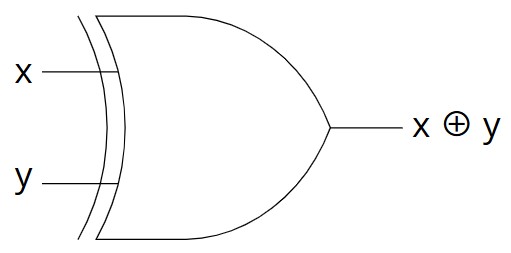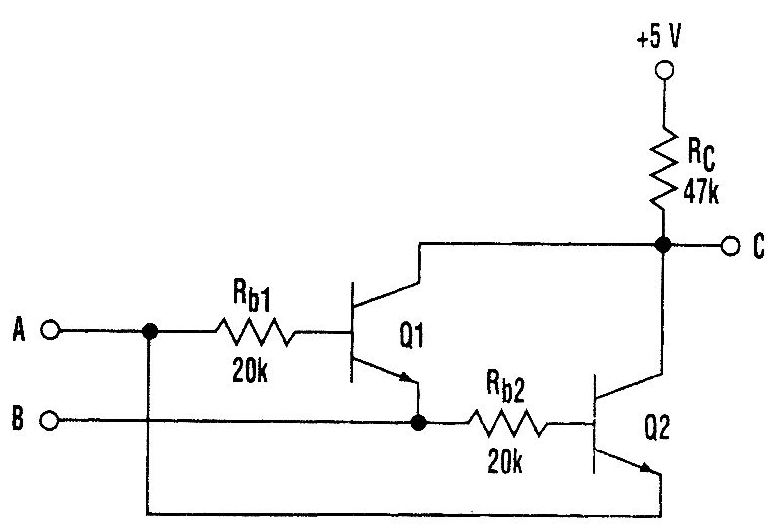Logic Gates: XOR
The XOR (= "exclusive or") logic gate takes two bits as an input. Its output follows the rule: "if both bits are different, output $1$; if they are the same, output $0$." This gate acts exactly as the bitwise "xor" operator in programming does: given the Boolean variables x and y, then: x ^ y means "x xor y".
Below is the black-box representation of the XOR gate, one way in which we can build it with transistors, and its truth table.

XOR Gate: black-box representation. Miriam Briskman, CC BY-NC 4.0.

One way to build an XOR Gate from transistors. Taken from this article by Yann Guidon.
| Input | Output | |
|---|---|---|
| x | y | x ⊕ y |
| $0$ | $0$ | $0$ |
| $0$ | $1$ | $1$ |
| $1$ | $0$ | $1$ |
| $1$ | $1$ | $0$ |
